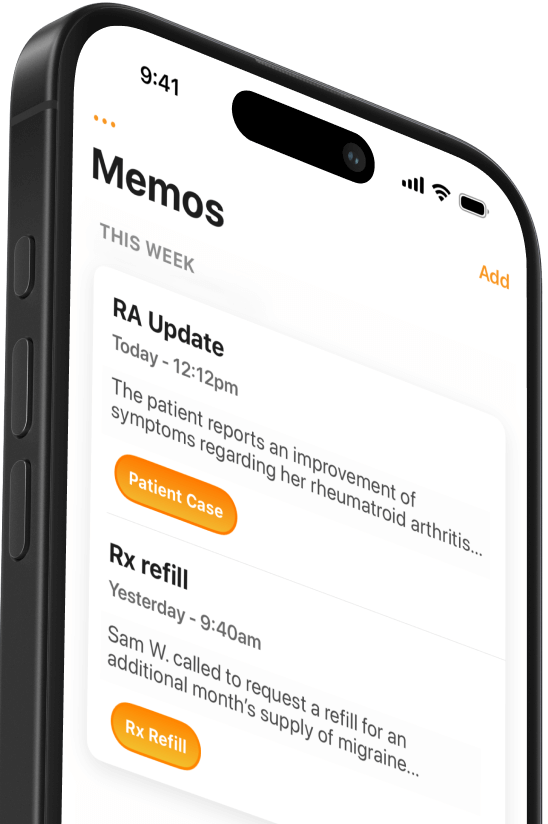3 tips for EMR documentation during COVID-19
During COVID-19, EMR documentation matters. Protect your practice by detailing pandemic impacts, mastering telehealth workflows, and knowing your billing codes.


Popular articles
Documentation in the electronic medical record (EMR) may feel like the last thing to prioritize during the COVID-19 pandemic. But as a provider, having a smooth documentation plan will help keep your practice healthy and efficient amidst unique challenges like new protocols and reduced staffing. This article covers three important considerations for EMR documentation during COVID-19.
3 tips for EMR documentation during COVID-19
1. Consider legal issues when documenting in the EMR
When your medical practice or hospital is overwhelmed with COVID-19 patients, EMR documentation may feel like your last priority. But in the current medical malpractice climate, it is very important to maintain an accurate chart.
As Matthew P. Keris, an attorney who works on EMR litigation, writes, “The most important recommendation is to be a good historian. Years from now, you will need to remind and educate counsel, judges, and juries of the magnitude of this world pandemic.”
Being a good historian means documenting how the COVID-19 pandemic has impacted operations at your practice. Detail any EMR technical issues and keep accurate staffing records. Document staff duties that have been expanded or temporarily changed, and acknowledge in written form if your team relaxed requirements for EMR documentation during COVID-19.
Documentation practices during COVID-19 may not meet your usual standards, and you should always care more about patient care than a detailed chart. But while legal issues shouldn’t be your top concern, they’re important to consider.
2. Save time by knowing your codes
EMR documentation during COVID-19 will likely involve a few common billing scenarios. By knowing and reviewing these, you will be more efficient and more likely to be reimbursed accurately during the pandemic.
In May, AMA released a guide with special coding advice during the COVID-19 public health emergency. The guide summarizes coding best practices for commons scenarios like the following:
- A patient comes to the office for an E/M visit, is tested for COVID-19 during the visit, and the test is conducted at a laboratory.
- A patient received a telehealth visit about COVID-19 and is directed to an unaffiliated testing site.
- As the physician, you order remote physiological monitoring to follow a patient quarantined at home after receiving a COVID-19 diagnosis.
Many of these scenarios may not be familiar, and getting the codes right can feel daunting. Work with your team to review and summarize common billing scenarios so you can save time in the future.
3. Streamline your telehealth workflow
Many providers implemented telehealth programs for the first time in response to the COVID-19 pandemic. But given the circumstances, your initial telehealth workflow was probably hasty and reactive. You can save time and frustration going forward by carefully planning out each stage of a telehealth visit, from scheduling to documentation.
Before you see patients
Make sure to communicate clearly with your staff about when you’ll be available for telehealth vs. in-office appointments. Then discuss the details: how patients can schedule, how you will access the information you need for each patient visit, and who will greet the patient first on the call. To ensure that you always have easy access to patient charts, you may want a mobile EMR during the pandemic.
During each visit
Telehealth etiquette is new for most patients and providers, but it’s your job to take the lead. Identify yourself to new patients, confirm their identity, and make sure their audio and video are working. These simple steps ensure a smooth appointment, which should otherwise be as normal as possible.
After each visit
Make sure to document the visit as soon as possible, including the fact that it was a telehealth visit. If you’re new to telehealth billing, here’s a quick primer.
Mastering EMR documentation during COVID-19
Having a smooth EMR documentation plan shouldn’t be an afterthought. As a provider, this is how to keep your practice healthy and efficient during a challenging time. You can save time and stay focused on patient care by knowing your codes, having an intentional telehealth workflow, and considering legal issues when documenting in the EMR.
PLEASE NOTE: The information provided on this website does not, and is not intended to, constitute legal advice; instead, all information, content, and materials available on this site are for general informational purposes only.
https://www.mobius.md/blog/2020/07/benefits-of-a-mobile-emr-during-the-pandemic/
Related Articles


We Get Doctors Home on Time.
Contact us
We proudly offer enterprise-ready solutions for large clinical practices and hospitals.
Whether you’re looking for a universal dictation platform or want to improve the documentation efficiency of your workforce, we’re here to help.




